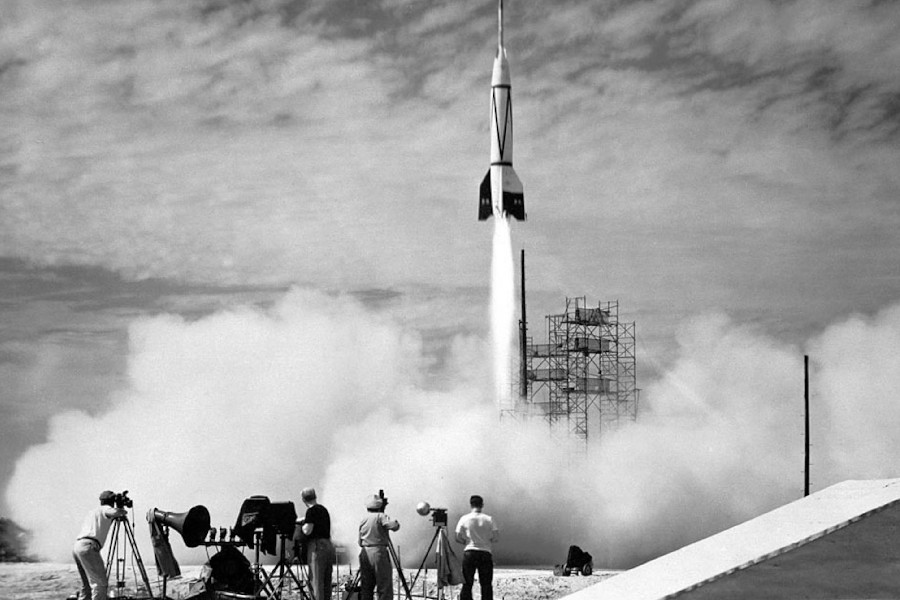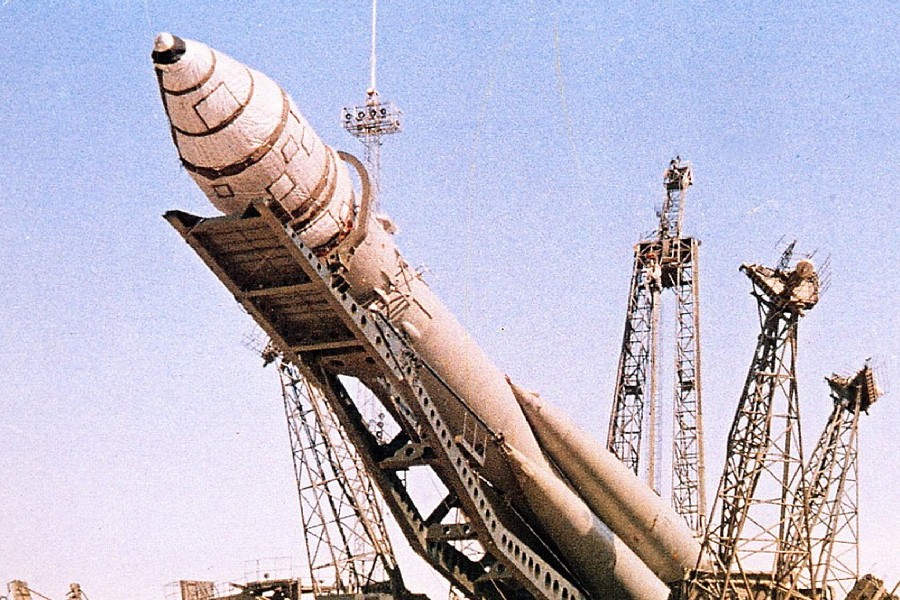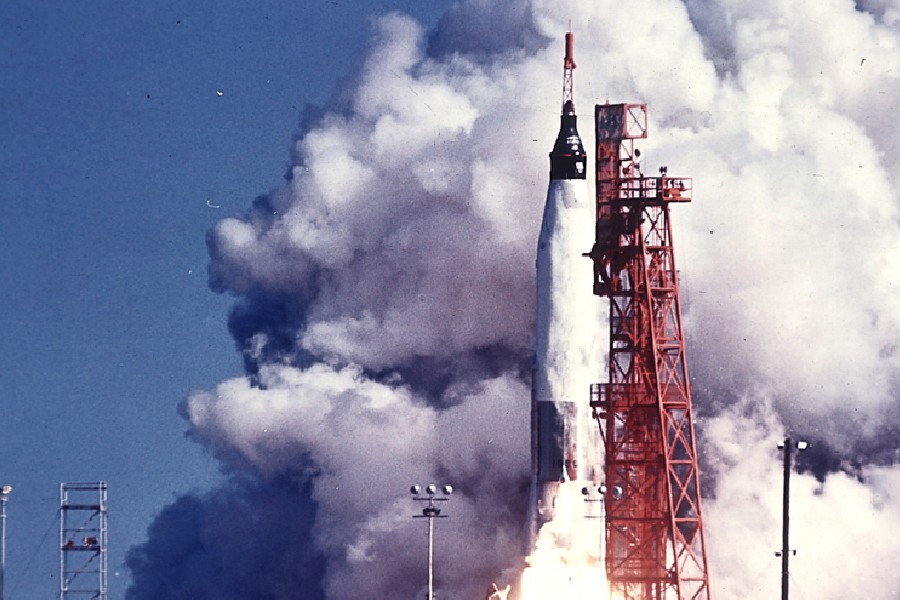The epic journey to land on the Moon was more than a giant leap for mankind. It began as a technology and ideological duel between two 20th-century superpowers that came to be known as the Space Race. This captivating clash pushed space exploration advancement into overdrive in a remarkably short span of time. The Space Race timeline covers a brief but intensely eventful slice of history.
It charts out the origins of an ambitious vision that set the stage for satellites, astronauts and rockets to ascend center stage. Through this article, we will highlight key events that shaped an unprecedented era of human achievement beyond Earth.
From the shockwaves of Sputnik to the immortal footprint on lunar soil, the Space Race timeline memorializes monumental moments. It is also a reminder of the wonders made tangible through peace and visionary scientific collaboration for the benefit of all humanity.

Space Race Timeline
The Space Race timeline encompasses the competitive period between the United States and the Soviet Union during the mid-20th century.
When did the Space Race begin?
The Space Race began in the late 1950s during the Cold War between the United States and the Soviet Union.
Both countries were in a competition to achieve milestones in space exploration. The Soviet Union took the lead by launching the first artificial satellite, Sputnik, in 1957. Then, in 1961, Yuri Gagarin became the first human to orbit the Earth.
On the other hand, the United States responded by establishing NASA and successfully landing astronauts on the Moon in 1969 during the Apollo program.
How long did the space race last?
The Space Race lasted for about 15 years, starting in the late 1950s and ending in the early 1970s. During this time, the United States and the Soviet Union were in fierce competition to achieve various milestones in space exploration.
When did the space race end?
The race effectively ended in the early 1970s when the US landed the first humans on the Moon with the Apollo 11 mission. This marked a major American victory, though unmanned missions continued for several more years.
This intense space exploration rivalry concluded with the Apollo-Soyuz Test Project in 1975, symbolizing a thaw in Cold War tensions through joint space endeavors.
The Timeline of Space Race
Yuri Gagarin
Historic flight
On April 12, 1961, Gagarin made history as the first human to journey into outer space aboard Vostok 1. His single 108-minute orbit around Earth was a watershed moment.
The event gave the USSR dominance in the Space Race. Gagarin became an international celebrity, symbolic of human potential and peaceful Soviet progress.
Gagarin’s accomplishment built national pride in the USSR’s technological achievements during the Cold War era. It established him as a role model of Soviet communist values on the global stage.
Challenges in space
Gagarin endured intense physical strain during launch and reentry, including almost losing consciousness due to extreme G-forces. The triumphant propaganda value for the Soviet space program led to intensified efforts following his feat, including putting the first woman in space.
Vostok 1 orbited at an altitude of 187 miles, which required Gagarin to wear a spacesuit in the event of cabin decompression.
As a citizen of a collective farm family, Gagarin embodied the Soviet ideal of the common man triumphing via communal effort. His international tour after the flight gained global fame and adoration despite being closely controlled by Soviet authorities.
Gagarin’s modest and cheerful manner during the risky mission exemplified courage under pressure as the world watched.
Vostok 1 launch
The Vostok 1 spacecraft represented groundbreaking achievements to enable human spaceflight. This included compact design, space suits, instruments, and a reentry procedure.
Gagarin faced immense G-forces, weightlessness and reentry fire during his solo mission. Though largely automated, it paved the way for bold manned exploration.

Global impact
Vostok 1 amplified perceptions of Soviet technological superiority across the globe. This fueled ambitious reactions from the US space program.
The Vostok spacecraft design drew from an established Soviet rocket and satellite program. This program was responsible for earlier space firsts after WWII.
Ground control kept secrecy and tightly monitored each stage of the flight. They did not reveal many details until after the flight’s completion. Vostok 1 carried a dummy payload of life support supplies and radio equipment weighing over 700 pounds.
The automated systems meant Gagarin’s role was mainly as a passenger during the launch, orbit, and descent. Engineers integrated lessons from 20 uncrewed test flights of Vostok leading up to Gagarin’s pioneering mission.
State media portrayed Vostok 1 as an achievement of the Soviet communist system despite relying heavily on chief designer Sergei Korolev. The flight proved USSR rocketry could match propulsion needs for manned spaceflight, paving the way for more ambitious exploration.
Neil Armstrong
Background
Neil Armstrong was an experienced test pilot and aerospace engineer. He joined the astronaut corps in 1962 after serving as a naval aviator and flying over 200 types of aircraft. Armstrong orbited Earth aboard the Gemini 8 mission in 1966, performing the first successful space docking maneuver.
Historic feat
As Apollo 11 commander, Armstrong will forever be remembered as the first man to step foot on lunar soil. The historic feat captivated the world on July 20, 1969, as over 500 million people tuned in.
Stepping off the lunar module’s ladder, Armstrong spoke his famous quote “That’s one small step for man, one giant leap for mankind.” The moment marked a monumental achievement for the United States in the Space Race with the Soviet Union.
Armstrong was commemorated across the world as a symbol of human vision and resolve. His calm demeanor and humility exemplified leadership under pressure during the tense landing. After returning safely to Earth, Armstrong and the Apollo 11 crew were lauded with praise and admiration globally.
Cool and brilliant pilot turned reluctant icon
Despite being a global icon, Armstrong avoided the spotlight after Apollo 11, teaching engineering and largely eschewing fame. Before NASA, he flew experimental aircraft testing high-speed, high-altitude flight conditions.
His background included a Bachelor’s in aeronautical engineering and a Master’s in aerospace engineering. Armstrong saw active duty as a naval aviator flying 78 combat missions during the Korean War.
He set a series of records as an elite test pilot prior to being selected for NASA’s Gemini and Apollo programs. Armstrong was revered for his engineering brilliance and ability to stay calm under extreme pressure during missions.
Alan Shepard and John Glenn
Shepard and Glenn were among the Mercury Seven – NASA’s first astronaut group selected for manned spaceflight in 1959. Both played vital early roles.
First flights into space
Shepard became the first American in space in 1961 with a 15-minute suborbital flight. Glenn later made three Earth orbits aboard Friendship 7 in 1962, a first for America.
Their bravery and dedication as pioneer spacemen ignited American enthusiasm. This rallied support for Apollo’s goal of reaching the Moon before 1970.
As ex-military test pilots, they epitomized NASA’s initial recruitment of bold adventurers willing to risk their lives advancing space travel.
Return flights later in life
Shepard waited almost 10 years to return to space due to illness, commanding Apollo 14 in 1971 at age 47. Both received ticker tape parades in New York City after their historic flights.
Glenn was the last Mercury astronaut to fly in space, returning on the shuttle Discovery in 1998 at age 77. Their charisma, composure and military backgrounds helped portray astronauts as American heroes.
Shepard hit a golf ball on the Moon during Apollo 14, joking that it traveled “miles and miles and miles”. The astronauts quarantined after their flights due to fears microgravity may have affected immunity.

Friendship 7 mission
On February 20, 1962, John Glenn became the first American astronaut to orbit Earth. The three-orbit mission aboard Friendship 7 was a major step for NASA’s manned spaceflight program.
The flight experienced technical issues, including a malfunctioning thruster and concerns about a heat shield failure. Glenn piloted the craft for a safe reentry and recovery despite challenges.
National hero
Glenn returned home as a national hero and celebrity after the 4 hours and 55 minutes flight. This restored American confidence and prestige early in the Space Race competition.
Millions listened to the dramatic radio broadcast as Glenn overcame equipment failures to complete his orbital voyage and return safely. After retirement, Glenn became a U.S. Senator in 1974, serving for 25 years.
John Glenn’s historic Mercury flight
He was the last surviving member of the Mercury Seven when he died in 2016. Friendship 7 landed 800 miles downrange from its target due to a retropack malfunction but was tracked and recovered.
Oxygen pack failures left Glenn breathing pure oxygen for much of the flight, resulting in symptoms of anoxia. Glenn remained aboard Friendship 7 after landing until flotation devices were attached in case it sank.
President Kennedy watched Glenn’s return on TV in the White House, relieved by the mission’s success. On the 50th anniversary of his flight, Glenn was awarded the Presidential Medal of Freedom by Barack Obama.
Artificial satellites
The launch of artificial satellites provided platforms for groundbreaking Earth and space observations that fed back vital data previously unattainable.
Satellites served as early testbeds for satellite navigation concepts, advanced robotics, long-distance communication tech and more that contributed to technological advancement.
The satellites enabled vital learning curves for tracking capability, solar panels, thermal regulation, orbital adjustments through thrusters and reentry techniques to advance space exploration.
Both the Soviet and American satellite programs advanced rocketry and aerospace engineering capabilities essential for human spaceflight goals. They provided new ways to collect weather data, track natural disasters, survey Earth’s resources, and monitor military activities.
The rapid evolution of satellite technology fed into countless applications that shaped modern telecommunications, agriculture, urban planning and more.
Sputnik 1
Sputnik 1, launched by the USSR on October 4, 1957, marked humankind’s first steps towards space travel capability as the first artificial Earth-orbiting satellite.
Being first gave the Soviets a massive ideological and technological propaganda boost during the Cold War. This intensified the rivalry that became the Space Race.
The 184-pound beach ball-sized satellite transmitted radio signals as it orbited every 98 minutes, visible to the naked eye at night. Sputnik set off a worldwide fascination with the dawn of the space age and the possibilities for rocketry and satellites to benefit science and society.
It forced American policymakers to make space exploration and technology national priorities to keep pace with Soviet capabilities. Sputnik’s success was linked to chief Soviet rocket designer Sergei Korolev, whose identity was kept secret until after his death.
Explorer 1
Explorer 1 was successfully launched by the US on January 31, 1958, just months after Sputnik. It provided key data on radiation belts and discoveries beyond Earth’s atmosphere. The satellite confirmed American capability in rocketry and orbit after the Soviet lead, calming some Cold War security concerns.
Explorer 1 made the first discovery of the Van Allen radiation belts encircling Earth through its scientific instruments. The small, pencil-shaped satellite orbited for over 10 years and discovered the Earth’s magnetic field is weaker farther out.
Data from Explorer 1 fed directly into the growth of NASA and subsequent Pioneer, Gemini, Apollo and other missions. Its success reflected U.S. scientific capabilities and validated the strategy of launching many smaller satellites versus a few larger ones.
Conclusion
The iconic events that define the Space Race timeline culminate with the Apollo 11 Moon landing, an unparalleled breakthrough in exploration.
However, the ripple effects sparked by this timeline – from scientific discovery to technological leaps – continue impacting our world decades on. We hope glancing through the defining moments covered in this article has highlighted the vision, brilliance, and grit.
That vision, brilliance, and grit achieved the impossible through adversity. Beyond commemorating historic hard-won feats, the Space Race timeline also serves as timeless inspiration.
It reminds us that the indomitable human drive to understand and progress knows no bounds when fueled by imagination, ambition, and cooperation. With this spirit, we can rise to conquer the next exhilarating frontier.
